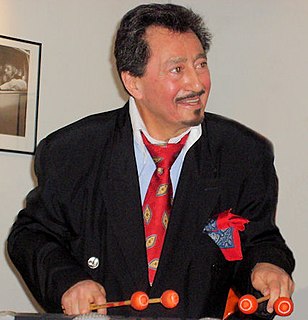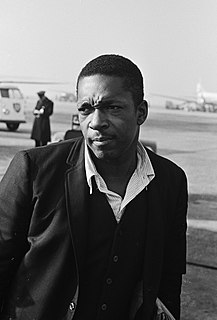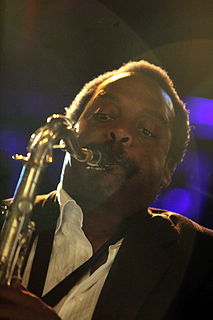
A big band is a type of musical ensemble that usually consists of ten or more musicians with four sections: saxophones, trumpets, trombones, and a rhythm section. Big bands originated during the early 1910s and dominated jazz in the early 1940s when swing was most popular. The term "big band" is also used to describe a genre of music. One problem with this usage is that it overlooks the variety of music played by these bands.

The tenor saxophone is a medium-sized member of the saxophone family, a group of instruments invented by Adolphe Sax in the 1840s. The tenor and the alto are the two most commonly used saxophones. The tenor is pitched in the key of B♭ (while the Alto is pitched in the key of E♭), and written as a transposing instrument in the treble clef, sounding an octave and a major second lower than the written pitch. Modern tenor saxophones which have a high F♯ key have a range from A♭2 to E5 (concert) and are therefore pitched one octave below the soprano saxophone. People who play the tenor saxophone are known as "tenor saxophonists", "tenor sax players", or "saxophonists".
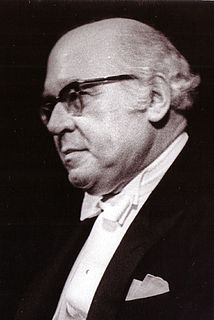
Ferenc Farkas was a Hungarian composer.

Kogun is the first album recorded by the Los Angeles-based Toshiko Akiyoshi – Lew Tabackin Big Band. It was released in Japan by Victor in 1974 and received the Swing Journal Silver Disk prize for that year. It was later released on RCA Victor in the USA and elsewhere and received a 1979 Grammy nomination for Best Jazz Instrumental Performance by a Big Band.
Murray McEachern was a Canadian jazz trombonist and alto saxophonist born in Toronto, perhaps best known for having played trombone for Benny Goodman from 1936 to 1937. McEachern is equally remembered for playing both the trombone and alto saxophone for the Casa Loma Orchestra from 1937 to 1941.

The Dutch Swing College Band "DSCB" is a traditional dixieland band founded on 5 May 1945 by bandleader and clarinettist/saxophonist Peter Schilperoort.

Swing is a soundtrack for the 1999 film of the same name, which stars Lisa Stansfield, who also recorded ten songs for the soundtrack and co-wrote four of them. The album was released in Europe on 10 May 1999 and in North America on 13 July 1999. Swing garnered favorable reviews from music critics who called it a "gem" among the soundtracks. The album, full of jazz and swing songs, reached number six on Billboard's Top Jazz Albums chart. On 2 June 2003, it was remastered and re-released in Europe with an alternative cover art.

Blue Delight is a jazz album by free jazz pioneer Sun Ra.

Kálmán Balogh is a Hungarian cimbalom player and leader of Kalman Balogh's Gypsy Cimbalom Band.

6 is the sixth album from the Hungarian musical ensemble After Crying, released in 1997.
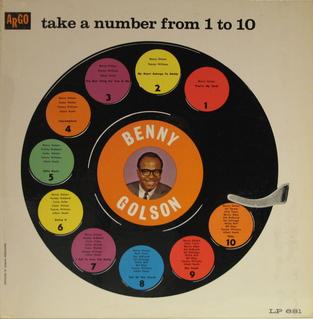
Take a Number from 1 to 10 is an album by saxophonist Benny Golson, featuring performances recorded in late 1960 and early 1961 and originally released on the Argo label.
The Christian McBride Big Band is a 17-piece, twenty-first century, big band whose debut album The Good Feeling received the Grammy Award for Best Large Jazz Ensemble Album in 2012.
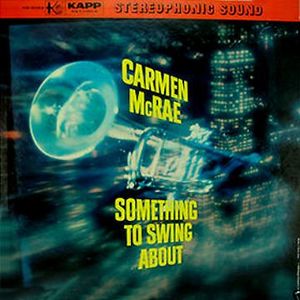
Something to Swing About is a 1959 album by jazz singer Carmen McRae, arranged by Ernie Wilkins.

Gerry Mulligan and the Concert Jazz Band at the Village Vanguard is a live album recorded by American jazz saxophonist and bandleader Gerry Mulligan featuring performances recorded at the Village Vanguard in late 1960 which were released on the Verve label.
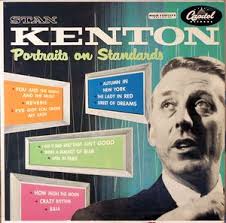
Portraits on Standards is an album by pianist and bandleader Stan Kenton with featuring performances of jazz standards recorded in 1953 and originally released on the Capitol label as a 10-inch LP.

In My Time is an album by the Gerald Wilson Orchestra recorded in 2005 and released on the Mack Avenue label.

Legacy is an album by the Gerald Wilson Orchestra recorded in 2011 and released on the Mack Avenue label.

Swing is the fifteenth studio album by Australian soul and R&B singer Renée Geyer. Geyer told The Sydney Morning Herald that Swing was inspired by Frank Sinatra's 1966 recording with Count Basie in Las Vegas, an album she had long admired. But it took the success of Michael Buble to convince her that she should lend her distinctive voice to a big-band album.

It's About Time is an album by saxophonist Jimmy Hamilton which was recorded in 1961 and released on the Swingville label.


